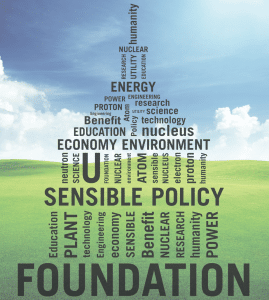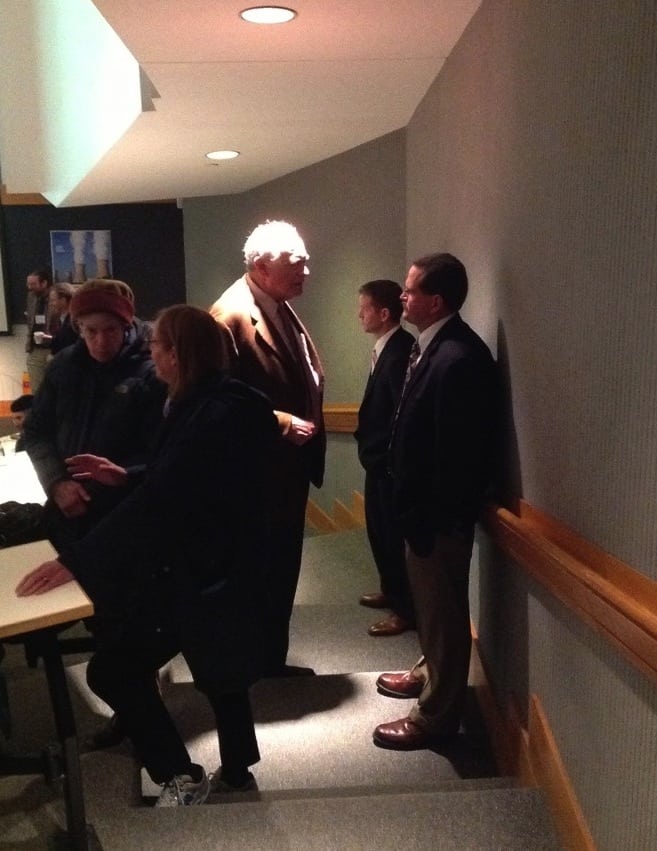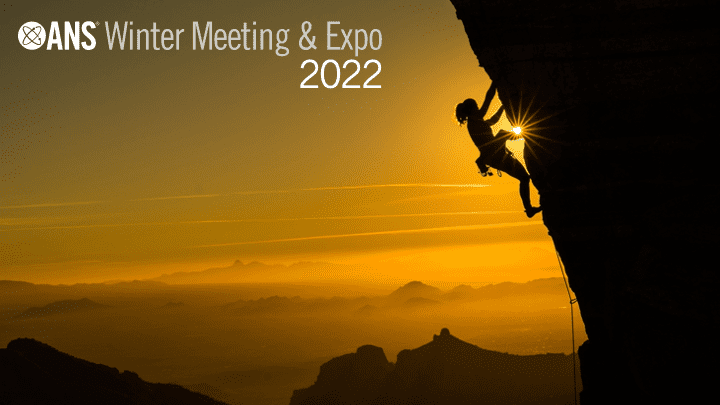ANS Winter Meeting – “Nuclear: The Foundation of Sensible Policy for Energy, Economy and the Environment”
In less than a week, I will be joining about 1200 or more of my fellow members of the American Nuclear Society at the annual winter meeting. The gathering place is the Marriott Wardman Park; the dates are November 8-12.
This year the meeting theme is “Nuclear: The Foundation of Sensible Policy for Energy, Economy and the Environment”. It is a good time and place for policy discussions – the presidential campaign is in full swing, the meeting is being held in Washington, D. C. and there will be an international meeting in Paris in December that will include some critically important policy discussions about the role of nuclear energy in alleviating the effects of CO2 emissions.
Nuclear scientists and engineers will have plenty of opportunities to geek out in penetrating technical discussions following presentations with titles like the following.
- Americium Oxide Space Radioisotope Power Systems: Cerium- Neodymium Oxide Surrogate Studies
- Current Status of FeCrAl Alloys as an Accident Tolerant Cladding Alloy Class for Commercial Light Water Reactors
- Neutron Activation Analysis with a Monte Carlo Simulation for Kidney Stones
- The Remote Compositional Analysis of Molten Salt (KF- LiF-10wt%ZrF4) by Probe Assisted In-Situ LIBS System
- Developing a Mathematical Scheme to Combine Single-Parameter Perturbation Results in Radiation Transport Calculations to Predict Joined Parameter Perturbations
Meeting attendees will also be able to participate in the following policy-oriented special sessions, which are led by a distinguished line up of invited speakers.
Special Sessions
- Opening Plenary: Nuclear: The Foundation of Sensible Policy for Energy, Economy, and the Environment, Mon. a.m. (8:00-11:30 a.m.)
- ANS President’s Special Session: Long-Term Operation of the U.S. Commercial Nuclear Fleet – Sustaining a National Asset, Mon. p.m. (4:30-6:30 p.m.)
- General Chair’s Session: Nuclear Energy: The Federal and State Approach to Compliance with the Clean Power Plan (CPP), Tues. p.m. (4:30-7:00 p.m.)
If your special interest is communicating about nuclear energy, there are several discussions that you probably want to put on your meeting calendar.
- Focus on Communications: Communicating with Policy Makers–Panel — Monday, November 9 1:00-2:30 p.m.
- Focus on Communications: Meet the Media–Panel, Monday, November 9 2:30-4:00 p.m.
-
Panelists:
- Rod Adams (Atomic Insights)
- Matt Wald (formerly New York Times)
- Darius Dixon (POLITICO)
- Roberta Rampton (Reuters)
- ANS Speakers Bureau Workshop — Tuesday, November 10 6:30–8:30 p.m.
- ANS Communications Workshop. Talking About Nuclear Energy With Policy Makers — Wednesday, November 11 4:00-6:00 p.m.
Other meeting highlights include the Sunday evening President’s Reception, the Tuesday Storm the Hill day led by the Young Professionals Congress, and the Tuesday Special Evening Event with the Capital Steps, which is included with the meeting registration compliments of the 2015 General Chair, Donald Hoffman.
I have been attending ANS meetings as often as possible since about 2004 and also during the period between 1992-1998. They are both valuable and interesting because they provide opportunities to learn, meet new people and catch up with old friends.
For another perspective about the benefits of attending ANS professional meetings, I recommend reading Brett Rampal’s recent post on ANS Nuclear Cafe titled ANS Meetings–Career Benefits of Attending.
I hope to see and speak with several of you during the meeting.




I’d like nuclear experts to clear up to a bemused public just exactly where is the Co2 coming from in a non-burning nuclear reactor when we see these industry Co2 generation graphs comparing nuclear’s Co2 output to solar and wind, etc. Surely such is zero at least in a nuclear submarine, right?
James Geenidge
Queens NY
Life cycle emissions would include those from the blast furnaces that made all the steel, the plants that made the concrete, the diesel from the excavators that dug up the uranium ore, etc, through to the shift workers driving in to the reactor. Counting the smoke plumes from the cities which will inevitably get nuked, if we don’t immediately renounce our radiotoxic ways, is possibly going a little too far ;). Some analysts also assume we’ll need a tank squadron to guard the spent fuel for the next million years.
Re: “Life cycle emissions would include those from the blast furnaces that made all the steel, the plants that made the concrete,…”
Wouldn’t this be the baseline for most every industry to start with? If we just omit that even playing field, what’s the REAL Co2 omissions from a nuclear reactor straight out of the plant?
RE: ” Some analysts also assume we’ll need a tank squadron to guard the spent fuel for the next million years.”
Not you, but from antis this is SUCH a bogus argument! You throw this waste down a thousand foot shaft in a remote place (like it has to be all that “remote”) and so what if it’s hazardous for a million years? Really, who’s going after it — monster moles? Here in NYC we have construction on a new water tunnel and there are guards around the service shafts only to keep the nosy from falling in (and it’s happened) before they’re sealed for good because those big holes are DEEP! You could drop the Chrysler Building in one and the tip won’t see daylight! Heck, nuclear waste would be just as safe and cozy away from the real world down those holes here as would down in the middle of the Sahara. I mean unlike in the Simpsons, nuclear waste doesn’t climb walls and across the street to creep into your bedroom. I just don’t know why nuclear advocates just shoot down the waste qualm thing with a single shot mentioning such!
James Greenidge
Queens NY
Will we need a tank squadron to guard all those toxic spent solar cells too? Complete rubbish (pun intended).
Nuclear waste is NOT unique with respect to long-term hazard. That is a complete myth. Once sealed, repositories also do not require oversight or surveillance; no more than any other waste burial site.
The fact is that nuclear has the BEST waste situation, not the worst. It is the only waste stream for which we have demonstrated no significant impact for as long as it remains hazardous. Most other waste streams are carelessly shallow-buried or released directly into the environment. Over both the short and long terms, those other waste streams will have a far larger negative impact than nuclear wastes.
As for net CO2 emissions, the analyses include all the things you mention, and (according to the IPCC itself) nuclear’s total net emissions are orders of magnitude lower than fossil fuels, and are a small fraction of those associated with most renewables (wind being the only exception, with net CO2 emissions similar to nuclear).
https://en.wikipedia.org/wiki/Life-cycle_greenhouse-gas_emissions_of_energy_sources
You speak of steel and concrete. Well, on a per kW-hr generated basis, renewables like solar and wind use ~20 times as much steel and concrete (not to mention over 100 times the land areas) as nuclear does. Their mining requirements (iron, concrete and rare earth metals, etc..) are greater than those associated with nuclear. All these facts come out in the (IPCC) net CO2 emissions calculations.
Entergy wants to close James A. FitzPatrick and keep Indian Point open. Governor Cuomo has vowed to fight for the opposite.
What bizarre times we’re in.
@Brian Mays
It’s all about the money. Indian Point is well located in a market where electricity prices are high enough to provide annual profits. Natural gas suppliers, many of whom provide Cuomo and his ilk with the resources that enables them to be prosperous politicians covet that New York City electrical power market.
FitzPatrick, on the other hand, operates in a part of New York where load growth is negative because of all of the industry that has been shuttered and moved overseas, often financed by New York City banks and hedge funds.
It has nothing to do with ideological bias against nuclear energy and everything to do with choosing technology based on short term monetary flows to and from cronies.
Rod – Not surprised about Entergy’s decisions; not surprised about Cuomo’s position on Indian Point (the acorn doesn’t fall far from the tree, does it?).
I was surprised, however, about Cuomo’s vow to fight to keep FitzPatrick open. All for about 600 jobs?
Personally, I think it’s all political pandering. The only question that remains is the choice of decommissioning method.